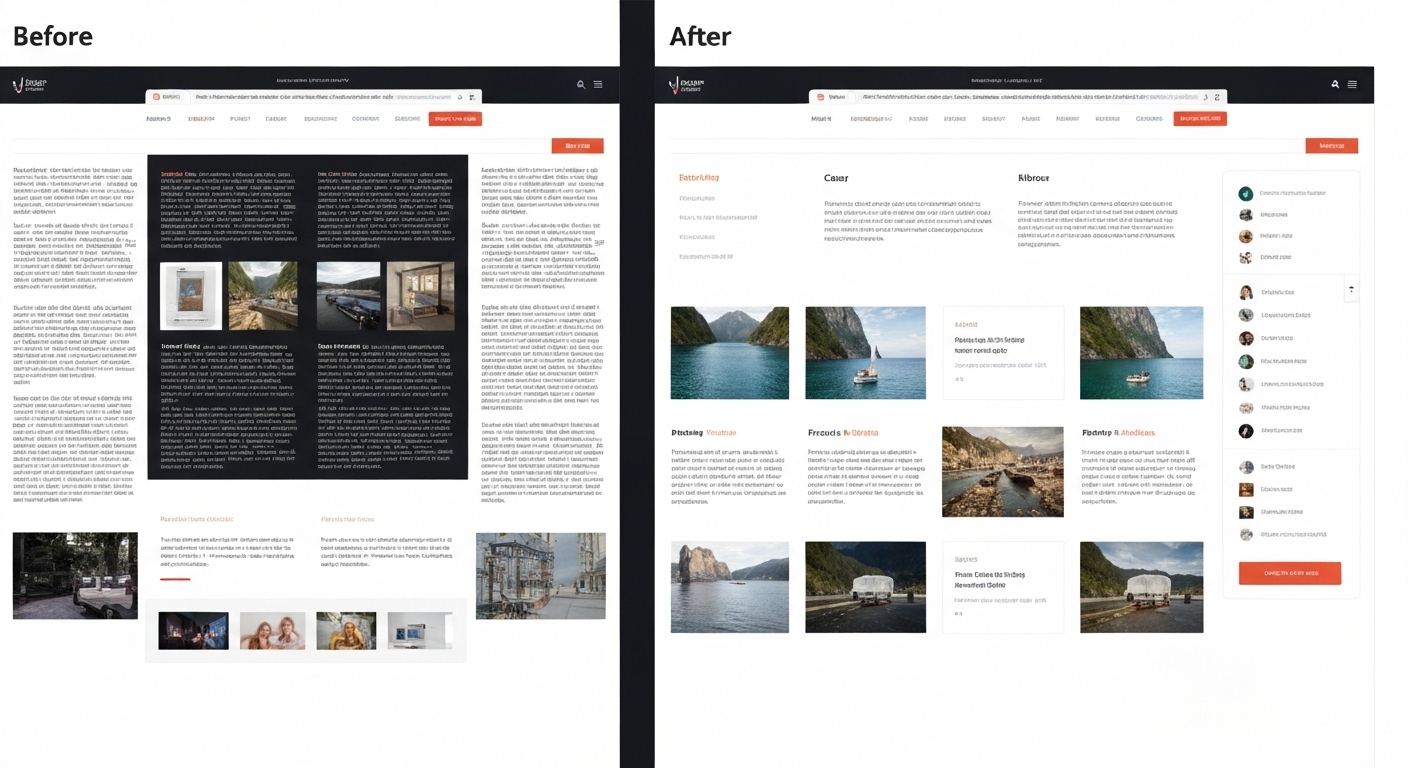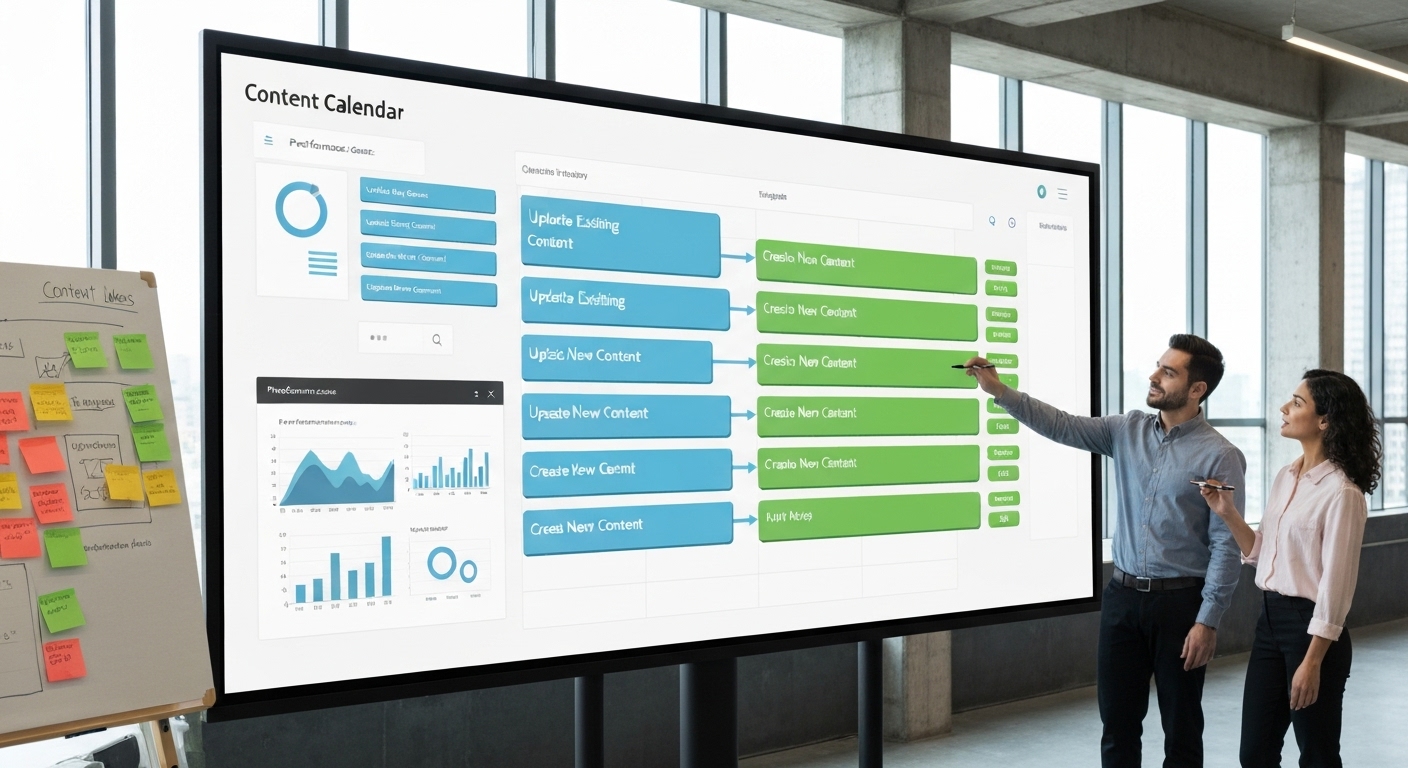Update or Create New Content : Which Strategy is Best ?
Is it better to update or create new content? This is a crucial question for any website owner or content marketer looking to improve their search engine rankings, engage their audience, and drive conversions. The answer, however, isn’t always straightforward and depends on various factors.

Understanding the Content Landscape
Before diving into whether to update or create new content, it’s essential to understand the current state of your website’s content. This involves conducting a content audit to identify gaps, outdated information, and underperforming pages. Consider your target audience and their needs. What questions are they asking? What problems are they trying to solve? Answering these questions will guide your content strategy.
The Importance of Keyword Research
Effective content, whether updated or newly created, hinges on solid keyword research. Understanding the search terms your target audience uses helps you optimize your content for search engines. Tools like Google Keyword Planner, SEMrush, and Ahrefs can assist in identifying relevant keywords with high search volume and low competition. Integrating these keywords naturally into your content, titles, and meta descriptions is vital for improving visibility.
The Case for Updating Existing Content (Content Refresh)
Updating existing content, also known as a content refresh, involves revising and improving your current web pages. This can include updating information, adding new sections, optimizing for relevant keywords, improving readability, and adding visuals. Content refresh strategies can significantly boost your SEO and user experience.

When to Choose a Content Refresh
- Outdated Information: If your content contains information that is no longer accurate, an update is necessary.
- Poor Search Rankings: Pages that rank poorly for relevant keywords can benefit from optimization.
- Low Engagement: If a page has a high bounce rate or low time on page, it may need a refresh to improve user engagement.
- Thin Content: Pages with minimal content can be expanded and enriched with more valuable information.
Benefits of Updating Content
A well-executed content refresh offers several advantages:
- Improved SEO: Updating content with relevant keywords and fresh information can improve search engine rankings.
- Increased Traffic: Higher rankings lead to more organic traffic.
- Enhanced User Experience: Up-to-date and engaging content improves user satisfaction.
- Cost-Effective: Refreshing existing content is often less time-consuming and costly than creating new content from scratch.
- Leveraging Existing Authority: Existing pages already have established authority and backlinks, which can be further strengthened with updates.
The Case for Creating New Content
Creating new content involves developing fresh articles, blog posts, guides, or other types of content to address new topics or expand on existing ones. This is essential for attracting new audiences and staying competitive in your industry. Fresh content signals to search engines that your website is active and relevant.

When to Choose to Create New Content
- New Topics: When you want to cover a topic that isn’t currently addressed on your website.
- Expanding Keyword Coverage: To target new keywords and attract a wider audience.
- Attracting New Audiences: When you want to reach a different segment of your target market.
- Addressing Content Gaps: Identifying areas where your competitors have stronger content offerings.
Benefits of Creating New Content
Creating new content provides several key benefits:
- Attracting New Traffic: New content can attract a new audience and expand your reach.
- Establishing Authority: Creating high-quality, informative content can establish your website as a trusted source of information.
- Driving Engagement: Fresh content can keep your audience engaged and coming back for more.
- Improving SEO: New content can target new keywords and improve overall search engine visibility.
How to Decide: Update or Create New Content?
The decision of whether it is better to update or create new content depends on several factors:
- Content Audit: Analyze your existing content to identify areas that need improvement or expansion.
- Keyword Research: Determine which keywords are most relevant to your target audience and assess whether your current content adequately addresses them.
- Business Goals: Consider your overall business goals and how content can support them. Do you need to attract new customers, improve brand awareness, or drive conversions?
- Resource Allocation: Evaluate the time and resources available for content creation and maintenance.
A Strategic Approach to Content Management
Often, the best approach involves a combination of both updating existing content and creating new content. This ensures that your website remains fresh, relevant, and engaging. Implement a content calendar to plan and schedule both updates and new content creation.

Content Optimization: A Continuous Process
Whether you choose to update or create new content, content optimization is an ongoing process. Regularly monitor your website’s performance, analyze user behavior, and make adjustments as needed. Use analytics tools to track key metrics such as traffic, bounce rate, time on page, and conversions. A/B testing different versions of your content can also help you optimize for maximum impact.
Evergreen Content: The Long-Term Strategy
Focus on creating evergreen content that remains relevant and valuable over time. Evergreen content attracts traffic consistently and requires less frequent updates. Examples include how-to guides, tutorials, and frequently asked questions (FAQs). Content can be updated with a few edits here and there over time to continue its freshness.
SEO Benefits of a Balanced Approach
A balanced approach to content, combining updates and new creation, yields significant SEO benefits. Updated content keeps your website fresh and relevant, while new content expands your reach and targets new keywords. This dual strategy enhances your search engine visibility, drives more organic traffic, and improves overall user engagement.
Leveraging User Experience (UX)
Both updating and creating content should prioritize user experience. Ensure your content is easy to read, visually appealing, and mobile-friendly. Use clear headings, subheadings, and bullet points to break up text and improve readability. Incorporate images, videos, and other multimedia elements to enhance engagement.

Tools for Content Management
Several tools can help you manage your content effectively:
- Content Management Systems (CMS): Platforms like WordPress, Drupal, and Joomla simplify content creation and management.
- SEO Tools: Tools like SEMrush, Ahrefs, and Moz provide insights into keyword research, competitor analysis, and website performance.
- Analytics Tools: Google Analytics and other analytics platforms help you track website traffic, user behavior, and conversion rates.
- Content Calendar Tools: Tools like Trello, Asana, and Google Calendar help you plan and schedule your content.
flashs.cloud: Your Partner in Content Delivery
Ensure your content is delivered quickly and reliably with flashs.cloud. A robust content delivery network (CDN) is essential for providing a seamless user experience, especially for websites with high traffic or geographically diverse audiences.
Conclusion: Finding the Right Balance
Deciding whether it is better to update or create new content requires careful consideration of your specific goals, resources, and audience. A strategic blend of both approaches is often the most effective way to maintain a thriving online presence. By continuously analyzing your content, conducting keyword research, and prioritizing user experience, you can optimize your website for search engines and achieve your business objectives. Remember, content is king, but a well-managed content strategy is the kingdom.
For more information on content marketing best practices, visit USA.gov.
HOTLINE
+84372 005 899


